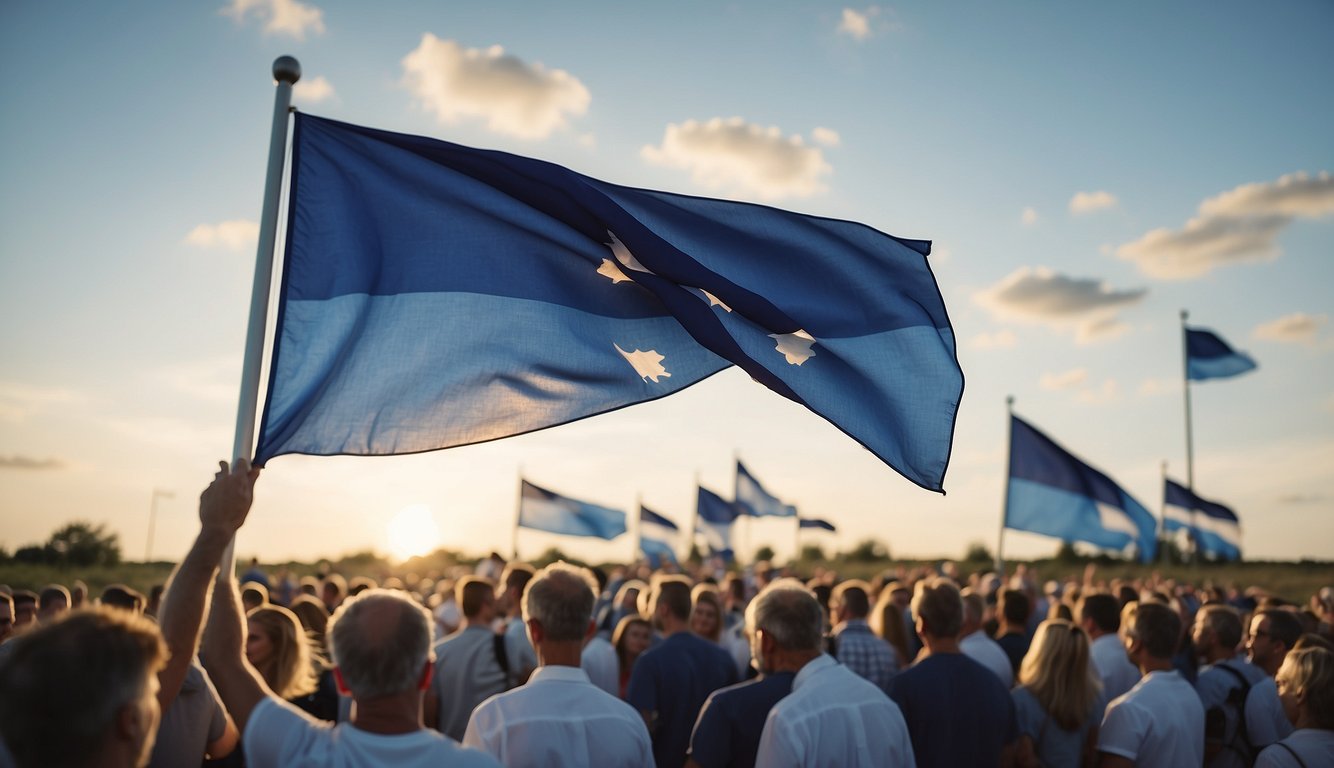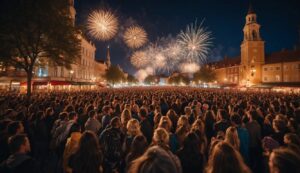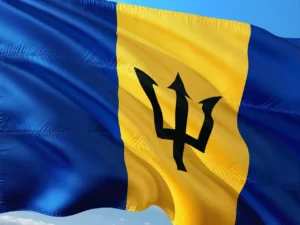Estonia commemorates its Independence Day on February 24, a date that honors the significant 1918 proclamation of independence from Soviet Russia, embodying a pivotal declaration of its sovereignty. This day holds deep significance for Estonians, symbolizing the persistent struggle to affirm their national identity and sovereignty. Despite several occupations during the 20th century, Estonia achieved its independence anew in 1991, following the collapse of the Soviet Union.
Today’s celebrations reflect national pride and unity, featuring flag-raising ceremonies, military parades, and cultural events highlighting Estonia’s heritage and achievements. Beyond mere celebration, these observances remind us of the enduring resilience and unity shaping Estonia’s history. The day is also an occasion to honor those who fought for independence and to educate young generations about the value of freedom and sovereignty.
Key Takeaways
- Estonia celebrates its independence on February 24, commemorating the 1918 declaration.
- The day is marked with various ceremonies and events that honor Estonia’s history and culture.
- Estonian Independence Day epitomizes national pride and the country’s enduring spirit of independence.
Historical Context

Estonia’s pursuit of sovereignty was marked by courage and persistence, culminating in pivotal moments that shaped its national identity and geopolitical standing. Our historical narrative unwinds from the early 20th century, detailing the nation’s struggle and eventual triumph in securing independence.
Road to Independence
The journey toward Estonian independence commenced during the geopolitical shifts of World War I, as the crumbling Russian Empire provided opportunities for nationalistic movements. In the turmoil, Estonia seized the moment to establish a foundation for independence, stepping out of the shadows of larger powers that had historically dictated its fate.
Estonian Declaration of Independence
On February 24, 1918, the pivotal Estonian Declaration of Independence was proclaimed in Tallinn, marking the departure from foreign rule. This assertion of autonomy was not merely symbolic but represented the collective will of the Estonian people to form a new, democratic state.
World War I and Aftermath
During World War I, Estonia found itself trapped between the military ambitions of the German Empire and a collapsing Russian Empire. Our nation endured occupation by German forces until the end of the conflict, which subsequently evolved into a power vacuum that paved the way for the fight for independence.
Tartu Peace Treaty
The Tartu Peace Treaty, signed on February 2, 1920, between Estonia and Soviet Russia, formally acknowledged Estonia’s independence, bringing the harrowing Estonian War of Independence to a close. This treaty established our international borders and solidified our status as a sovereign nation, free from the grasp of the Soviet Union and the German Empire.
Modern Celebrations

As we explore the commemoration of Independence Day in Estonia, we find that the vibrant and solemn celebrations bring together the past and present with various public events and a display of national symbols that resonate deeply with Estonians.
Public Events and Traditions
Tallinn’s Freedom Square becomes the focal point for Independence Day, hosting significant ceremonies and military parades. The sight of uniformed soldiers marching precisely is a stark reminder of the freedoms fought for and won.
Across Estonia, concerts and cultural events mark the day, drawing citizens out to participate in the revelry and commemoration. Communal gatherings, often featuring traditional music and dancing, reaffirm the nation’s solidarity.
National Significance and Symbols
The Estonian flag, proudly waved during Independence Day, symbolizes the country’s liberty and unity. At these celebrations, the national anthem, “Mu isamaa, mu õnn ja rõõm,” fills the air, instilling a sense of pride and remembrance.
Listening to the powerful lyrics sung by choirs or crowds in public squares, particularly in Tallinn, highlights the holiday’s significance to our national identity. These traditions on Independence Day reaffirm our collective cultural heritage and the continual growth of our nation as an independent state.
Anniversaries and Milestones

In mapping out the anniversaries and milestones, we pay tribute to the pivotal moments that have shaped Estonian independence. These occasions provide us with a clear timeline of our nation’s enduring quest for freedom and sovereignty.
Key Dates and Historical Markers
- February 24, 1918: The pivotal Declaration of Independence was proclaimed, marking the establishment of the Republic of Estonia. This day is commemorated annually as our Independence Day.
- Maapäev: Before our independence, the Estonian Provincial Assembly, known as Maapäev, was illegally dismissed by the occupying forces. However, Maapäev continued to operate underground, playing an essential role in the pursuit of Estonian autonomy.
- Moscow: As we progressed in asserting our independence, tensions with Moscow escalated, leading to eventual Soviet occupation. However, the spirit of independence never waned, and it fueled our eventual liberation.
- IME (The Baltic Way): On August 23, 1989, almost two million individuals took part in a peaceful demonstration known as the Baltic Way, spanning across Estonia, Latvia, and Lithuania. This event pressed the world to recognize our right to self-determination and helped restore our independence.
By acknowledging these significant dates and markers, we embrace our history and continue to inspire future generations to uphold the values we’ve fought so diligently to secure.
Demographics and Identity

In our analysis of Estonia’s Independence Day, we must consider its people’s demographics and the essence of its national identity. Our discussion will cover the population’s composition and linguistic attributes, as well as the cultural components that contribute to the Estonian sense of heritage and identity.
Population and Language
Estonia’s population stands as a testament to its historical resilience and the spirit of self-determination. The majority of residents are ethnic Estonians, with a significant Russian-speaking minority.
Language serves as a means of communication and a symbol of unity and national pride. Estonian, the official language, is a Finno-Ugric language and is part of the unique linguistic heritage that distinguishes Estonians from their neighbors.
Cultural Identity and Heritage
Our cultural identity is deeply rooted in a history of independence and the continuous drive for self-determination. As Estonians, we celebrate our Independence Day with a deep understanding of our ancestral past and the struggles endured to achieve and maintain our sovereignty.
The day encapsulates our journey from the days of ancient freedoms through periods of foreign dominion to the modern era, when we stand united in our diverse identities as Estonian peoples, cherishing our traditions and shared values.
Conclusion – Estonia Independence Day

On Estonia’s Independence Day, we celebrate our autonomy and freedom with a sense of pride that stems from our nation’s enduring resolve. This day symbolizes the solid unity that binds us as Estonians, as we pay homage to the historical declaration that marked the beginning of our nation’s journey as a sovereign state.
The Estonian Declaration of Independence molded our path, serving not only as a paper proclamation but as the embodiment of our enduring spirit for self-determination. As Estonians, we acknowledge our past challenges and treasure our regained independence, recognizing the steadfast courage and collective efforts of those who paved the way for our nation.
February 24th is etched in our hearts as a day of celebration and remembrance:
- Celebration of our journey as a nation
- Remembrance of the hardships we have overcome
- Acknowledgment of our ongoing commitment to preserve what we have achieved
Together, we honor our past struggles and step confidently into the future, cherishing the values that define us as Estonians. This day is an annual reminder of what we can accomplish through unity and perseverance.
FAQ – Estonia Independence Day
What is Estonia Independence Day?
Estonia Independence Day, celebrated on February 24th annually, marks the day in 1918 when the Estonian Declaration of Independence was issued, establishing Estonia as an independent state free from Russian rule.
How is Estonia Independence Day Celebrated?
The day is celebrated with various national events, including parades, patriotic concerts, cultural performances, and speeches by political leaders. The Estonian flag is also prominently displayed, and there are traditional wreath-laying ceremonies at monuments.
What Historical Events Led to Estonia’s Independence?
Estonia’s push for independence was influenced by the collapse of the Russian Empire in World War I. The Estonian Declaration of Independence was proclaimed in 1918, amidst the turmoil of the Russian Revolution and World War I.
If you enjoyed reading about Estonia Independence Day, check out our other articles:
Feel free to also check out our other Articles from the category “Independence Day“ and don’t forget to follow us on Pinterest.






